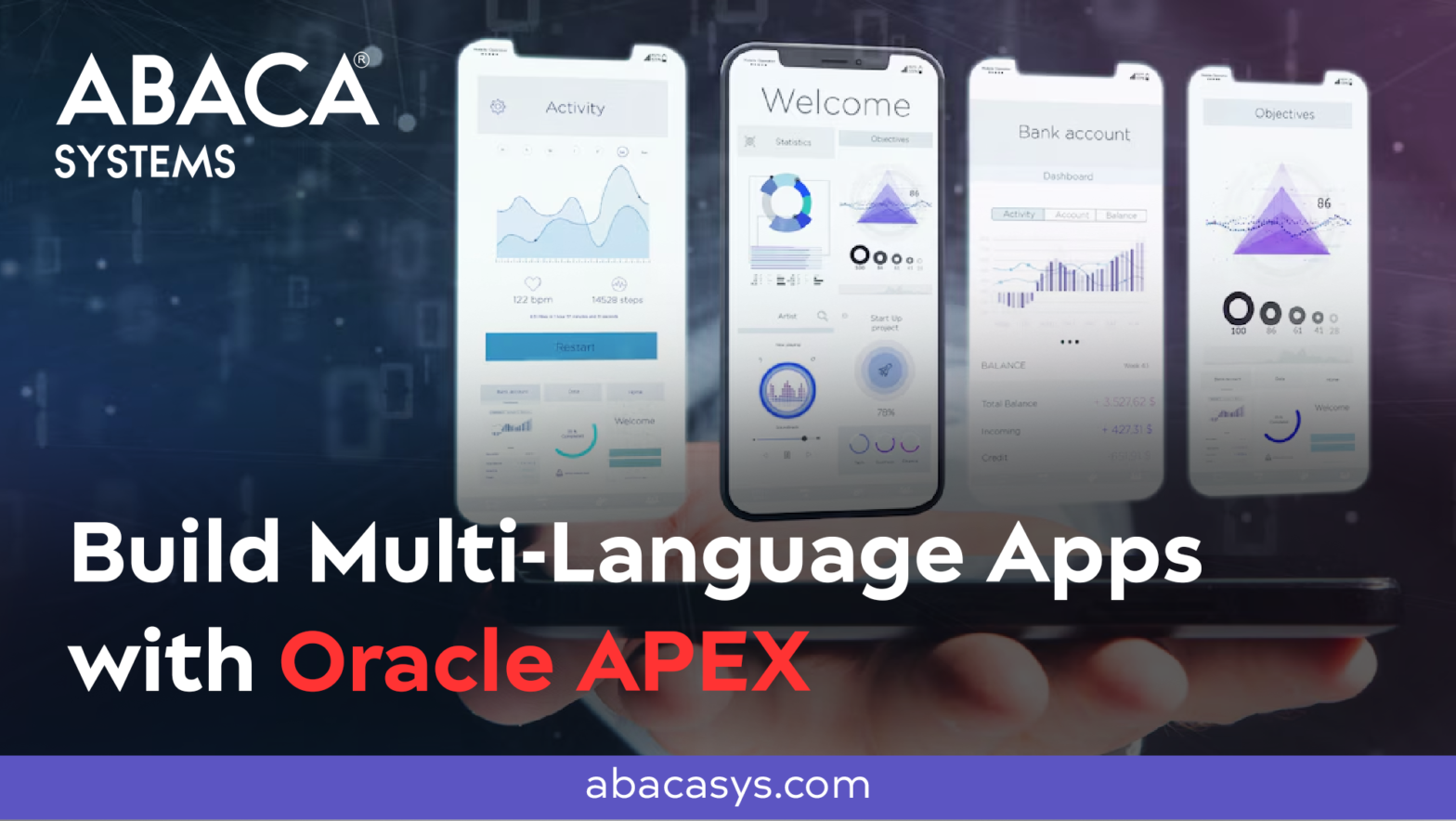Using Oracle APEX to Build Multi-Language Applications

Businesses require applications that cater to diverse audiences. A multi-language application will allow users from different regions to view content in their preferred language. Oracle Application Express (APEX) makes it easier for developers to build and manage such applications. This article explains how to create multi-language applications using Oracle APEX and why it is the ideal choice for developers.
What is Oracle APEX?
Oracle APEX is that low-code platform that will help build scalable and secure applications, as it is very flexible to work with and provides various features for creating responsive web or mobile applications. Its advantage of supporting multi-language developments makes it the preferred product for businesses dealing with large markets.
Why Use Oracle APEX for Multi-Lingual Apps?
Oracle APEX simplifies multi-language application development with inherent built-in language translation and localization features. Here’s how:
- Easy Language Management: Tools provided by Oracle APEX let developers manage multiple languages for a single application. An easy definition of translations for a region is possible.
- Reach Global Markets: Multi-language support allows businesses to go global by breaking the language barriers.
- Fast Development: APEX’s low-code environment reduces the time and effort required to implement language features.
With these capabilities, Oracle APEX allows businesses to create user-friendly applications tailored to global audiences.
Steps to Build Multi-Language Applications in Oracle APEX
1. Prepare Your Application for Translation
Before translating your application, you must format it to accommodate multiple languages. Oracle APEX has a translation mapping feature that allows you to associate text in one language with its translations in other languages.
First, you must enable the multi-language feature in your application settings.
Use text substitution variables for any dynamic text so that it can be easily translated.
2. Export Text Strings for Translation
Oracle APEX enables exporting text strings from your application for translation.
These text strings include labels, prompts, messages, and other user-facing content.
Go to the Shared Components section and select Translate Application.
Export the text strings into an XLIFF (XML Localization Interchange File Format) file.
This file contains all the text that needs translation.
3. Translate the Content
Once you export the XLIFF file, you can hand it over to professional translators or use translation tools. The file ensures that all the text is translated accurately without altering the application’s structure.
After completing the translations, import the XLIFF file back into Oracle APEX.
4. Configure Application Languages
To make your application available in multiple languages, you must configure the language settings.
In the Shared Components section, configure language mappings to determine which languages your application will support.
Specify the default language and specify secondary languages.
Oracle APEX automatically determines the browser language preference of the user and shows the application in the chosen language.
5. Testing and Optimizing the Application
Testing is an essential step to ensure that your application works flawlessly in all languages.
Test the application’s appearance and functionality in all supported languages by using a range of devices and browsers.
Test for layout changes resulting from the variation in text length among different languages. For example, text in German will be more lengthy than the text in English.
6. Maintain Language Updates
As your application scales, you might want to include new features or content. Oracle APEX will facilitate the translation update for you by letting you export the updated XLIFF file and import new translations.
Best Practices in Creating Multilingual Applications
-
- Always employ consistent terminology: Translate using consistent terms for a given application. Otherwise, clarity is lost.
- Do Not Use Hard-Coded Text: Always use a variable instead of hard-coding your text so updates will not be that cumbersome.
Design for Flexibility: Consider text expansion as an aspect of designing your layout, avoiding overlapping elements.
Benefits of Using Multi-Language Applications
Benefits of developing multilingual applications include the following:
- A better user experience occurs with the use of applications written in a language known by the user.
- The opportunity for businesses to reach out to more customers arises because various speakers’ needs are catered for.
- Cultural Adaptation: Localization enables businesses to customize their applications to the preferred culture, such as date format and currency.
Why hire Abacasys for your Oracle APEX projects?
Abacasys possesses a team of experienced professionals in Oracle APEX who have years of experience developing complex applications. Be it an app with a few requirements or a multi-language enterprise solution, Abacasys can deliver quality work designed according to your requirements.
With Abacasys, you can be sure that your application will be efficient, scalable, and ready to service a global audience.
Implementing Oracle APEX for multi-language applications helps in simplifying development processes while also enhancing the presence of your business in any global market. Let Abacasys help build applications that break language barriers and drive success worldwide.
